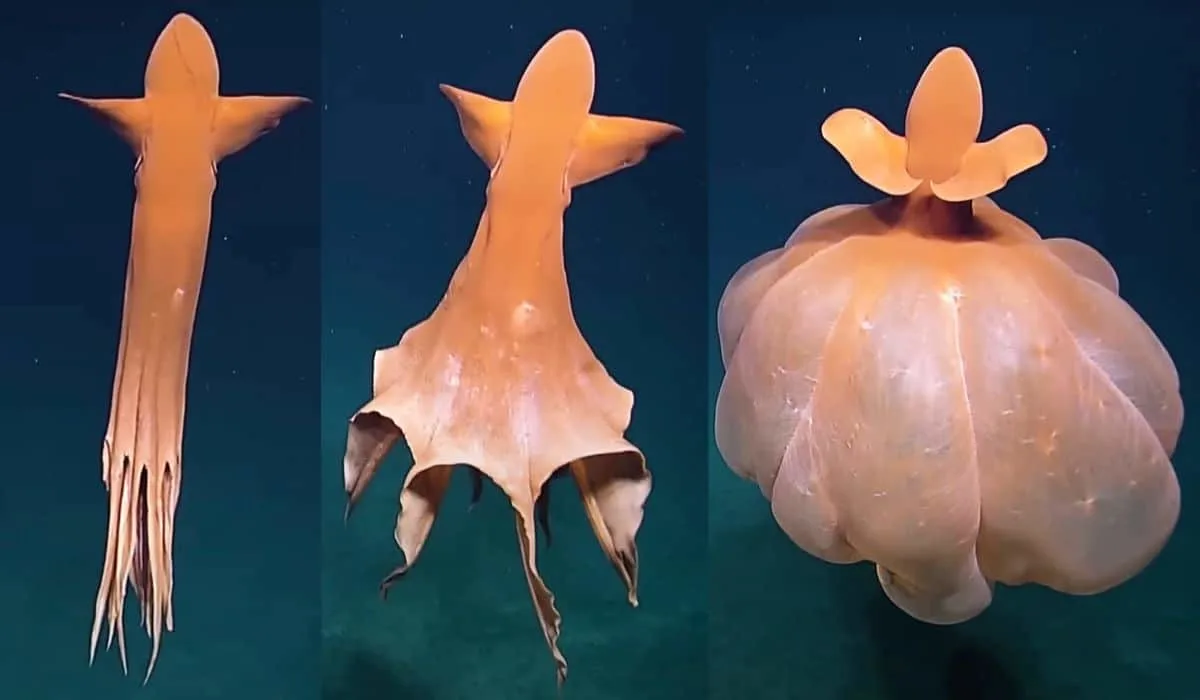An octopus that transforms into a huge balloon can be seen in this incredible footage from an expedition more than 5,000 feet below the water’s surface.

The octopus, a creature of the deep, is renowned for its almost alien-like ability to shapeshift. With a mastery over their form that seems to defy the laws of nature, they can change color, texture, and even size in an instant.
This talent is exemplified in footage from a deep-sea expedition, where an octopus transforms into a huge balloon, putting on quite a show for the expedition’s crew.
In this article, we delve into the fascinating world of octopuses and their shapeshifting abilities. We’ll explore how these remarkable creatures can alter their appearance so drastically and the benefits they reap from this.
Join us as we uncover the secrets of these masters of disguise and their awe-inspiring adaptability!
Key Points
- Incredible deep-sea footage shows an octopus transforming into a balloon-like shape, showcasing its remarkable adaptability.
- Octopuses can shapeshift, change color and texture, and alter their size.
- Specialized skin cells enable octopuses to mimic colors, patterns, and textures.
- Octopuses can change shape dramatically, even inflating their bodies when threatened.
- The mimic octopus can impersonate other marine animals to deter predators or lure prey.
- Deep-sea footage shows an octopus transforming into a balloon-like shape, showcasing its adaptability.
Shape-Shifting In Octopuses
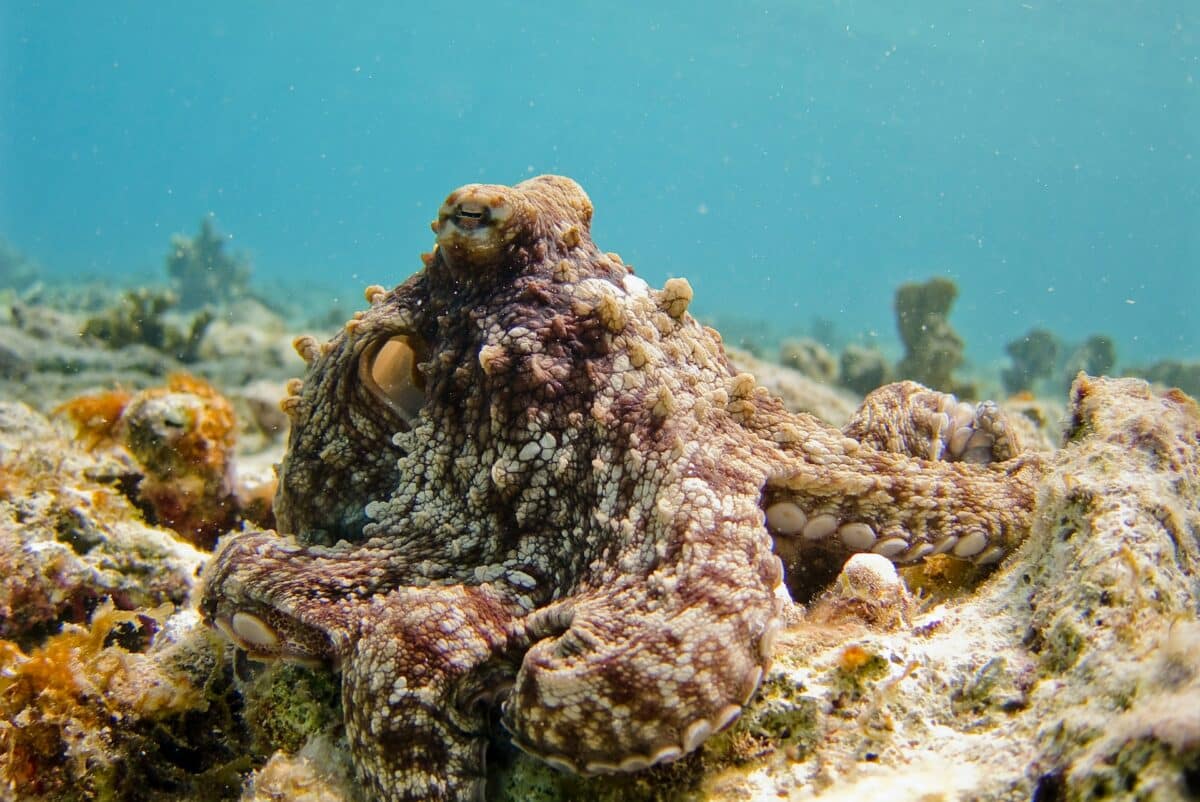
Octopuses are famous for their remarkable ability to shapeshift, change color and texture, and even alter their size.
Changing Color
Octopuses are masters of disguise, with the ability to change their color and texture in an instant. This is thanks to specialized cells in their skin. Chromatophores, pigment-filled cells that can expand or contract, allow the octopus to change its color. By controlling these cells, an octopus can display a wide array of colors and patterns.
In addition to chromatophores, their skin contains iridophores and leucophores, cells that reflect light. These cells enable the octopus to mimic the colors and patterns of its surroundings, giving them an extra layer of camouflage.
Changing Texture
Texture transformation is another fascinating ability of octopuses. Their skin contains muscular hydrostats, structures similar to the human tongue, that can change shape. By controlling these muscles, an octopus can mimic the texture of its environment, from the roughness of a rock to the smoothness of sand.
Changing Shape
Octopuses are boneless creatures, which allows them to change their shape dramatically, as can be seen by the octopus that transforms into a ballon. They can squeeze their entire body through tiny openings, a useful skill when escaping predators or exploring for food. When threatened, some species can inflate their bodies to appear larger and more intimidating.
The mimic octopus, a species of octopus, takes shape-shifting to a whole other level. It can not only change its form but also mimic the shapes and behaviors of other marine animals. In only a few moments, they can pose as lionfish, sea snakes, or flatfish. This ability to impersonate other creatures helps the mimic octopus to deter predators or lure prey.
The Video: Octopus Transforms Into Balloon
In the depths of the ocean, around 5,250 feet below the surface, an octopus puts on a captivating display. The video captures this elusive creature in its natural habitat, in the Pacific Remote Islands Marine National Monument, one of the world’s largest marine conservation areas.
The octopus, estimated to be 4,3 feet long, billows up like a grand circus tent caught in a gust of wind. It expands and contracts, showcasing its remarkable ability to shapeshift. What’s more, it does this several times, proving how quickly and efficiently it can change its appearance.
An invertebrate zoologist forming part of the expedition suggests that the octopus could be a Cirroteuthidae, a family of cirrate octopuses. According to the crew’s guess, it’s a member of the Cirrothauma magna species, although there’s a high chance that it might be one of several undescribed species.
As one researcher aptly puts it, the octopus is “really putting on a show for us.” This rare glimpse into the life of a deep-sea octopus was possible through specialized technologies aboard the E/V Nautilus, revealing the awe-inspiring adaptability of these creatures.
What Species Is It?
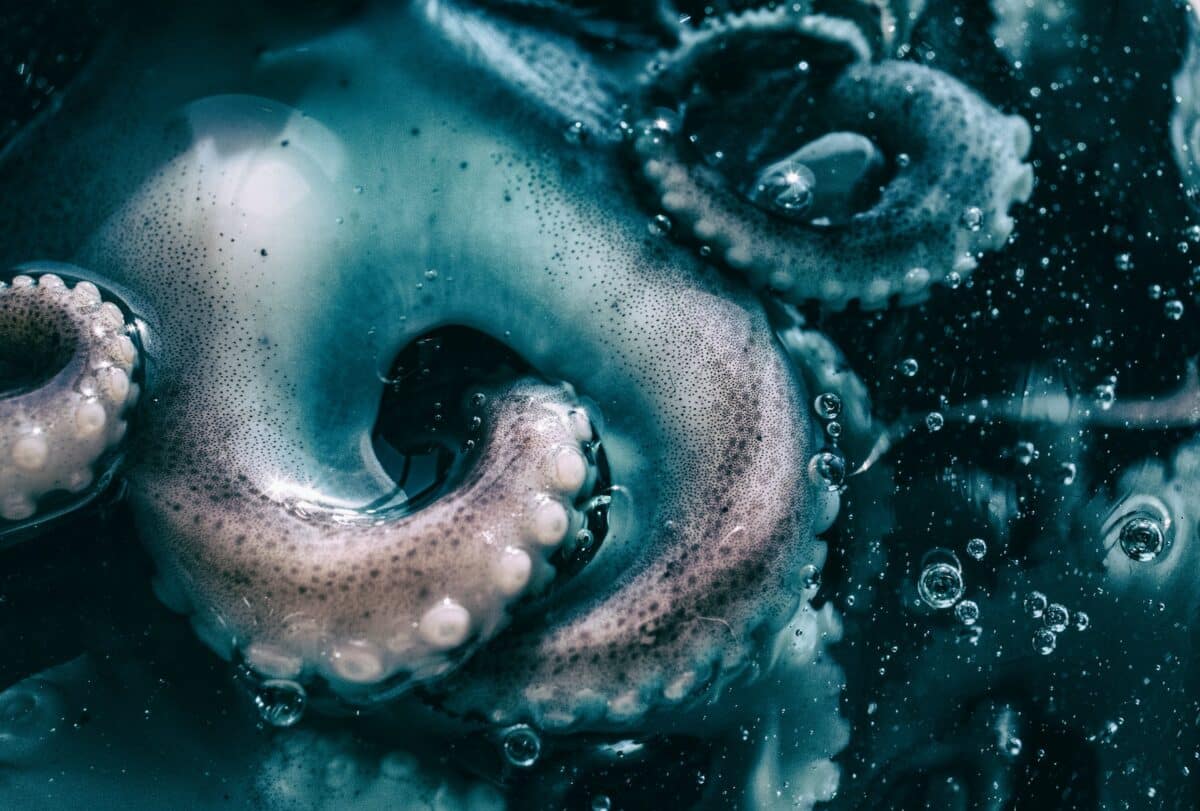
According to the speculations of the expedition’s crew, the octopus that transforms into a balloon could be a Cirrothauma magna. These creatures are deep-sea dwellers, often living at depths of over 6,600 feet where light does not penetrate the cold waters. Due to their hard-to-reach habitat, there is minimal knowledge about their behavior or lifestyle.
They are easy to recognize by their large size and the presence of cirri, small hair-like structures, along their arms. Like other members of its family, they allegedly have a gelatinous body and a unique ability to change shape, size, and color. This allows them to adapt to their environment and evade predators.
The few documented encounters with these creatures have revealed their impressive adaptability and resilience in the harsh conditions of the deep sea. Their ability to survive and thrive in such extreme environments makes them a fascinating subject of study for marine biologists.
More marine news: 5 Shark Attacks In 2 Days On Long Island.
How the Octopus Benefits From Shapeshifting
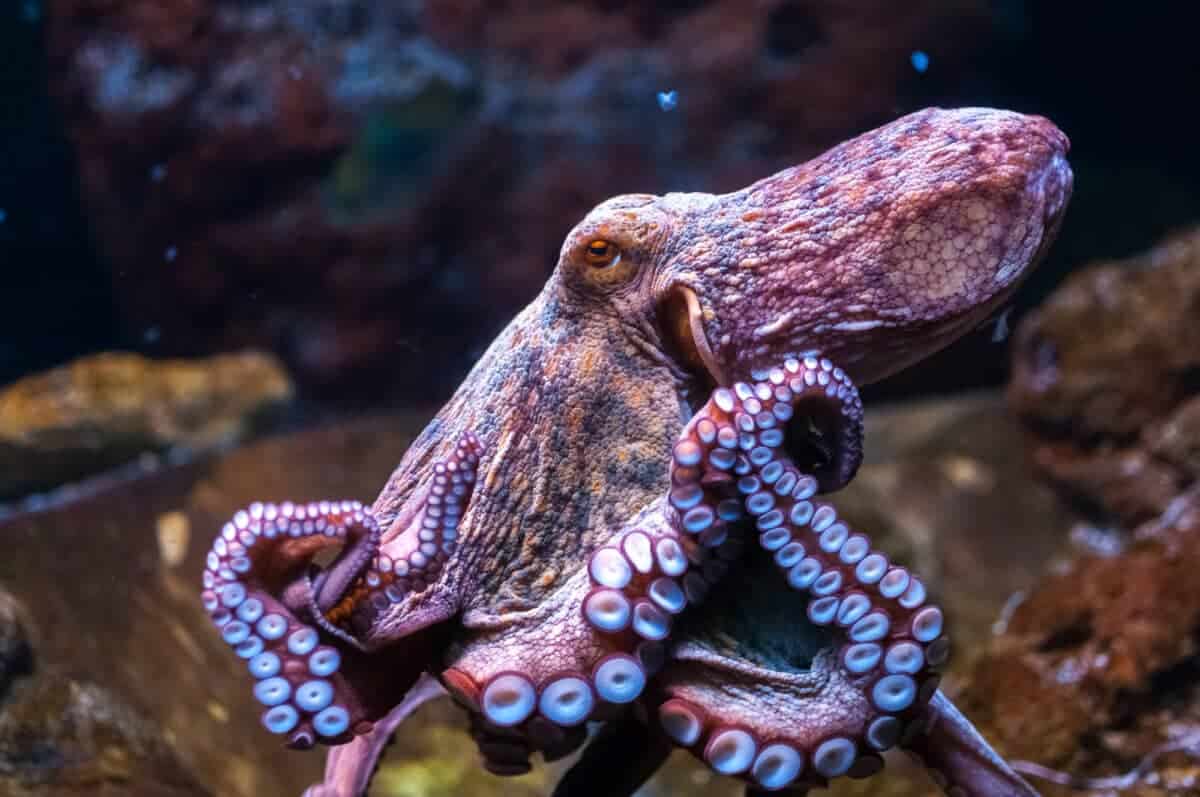
#1 Predator Evasion
Octopuses use their camouflage and shapeshifting abilities to blend into their surroundings and avoid detection by predators. By mimicking the colors, textures, and shapes of their environment, they can effectively hide in plain sight.
#2 Hunting Strategy
By changing their appearance to match the seabed or coral reefs, octopuses can sneak up on their prey undetected, giving them a significant advantage.
#3 Mimicking Dangerous Species
Some octopuses, like the mimic octopus, can imitate the appearance and behavior of more dangerous animals. This can deter potential predators, providing an additional layer of protection.
#4 Communication and Mating
Octopuses also use color changes to communicate with each other, especially during mating rituals. Bright colors and patterns can signal readiness to mate or warn off rivals.
#5 Threat Display
When threatened, some octopuses can inflate their bodies to appear larger and more intimidating. This can deter potential predators, giving the octopus a chance to escape.
You might also like: Giant Squid Attacks Surf Board.
FAQs About Octopus Camouflage
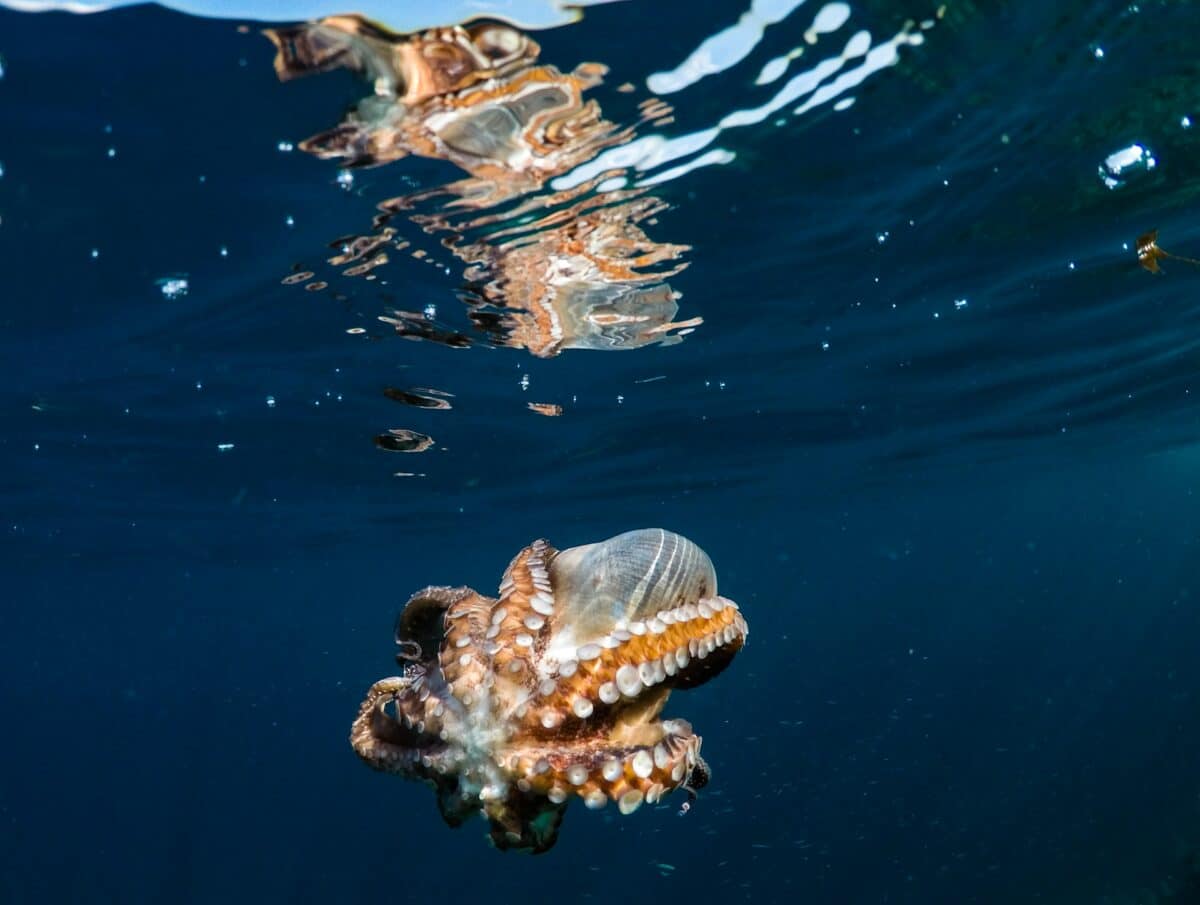
Octopuses have a variety of predators including sharks, larger species of octopuses, sea otters, eels, and dolphins.
An octopus is a marine animal that belongs to the Cephalopoda class, which also includes squid and cuttlefish.
When an octopus changes color, it is referred to as chromatophore expansion or contraction.
An octopus camouflages by changing the color, pattern, and texture of its skin to match its surroundings. This is made possible by specialized cells in its skin called chromatophores, iridophores, and leucophores. It can also alter its shape to mimic different objects or animals.
Octopus Transforms Into Huge Balloon: Wrapping Up
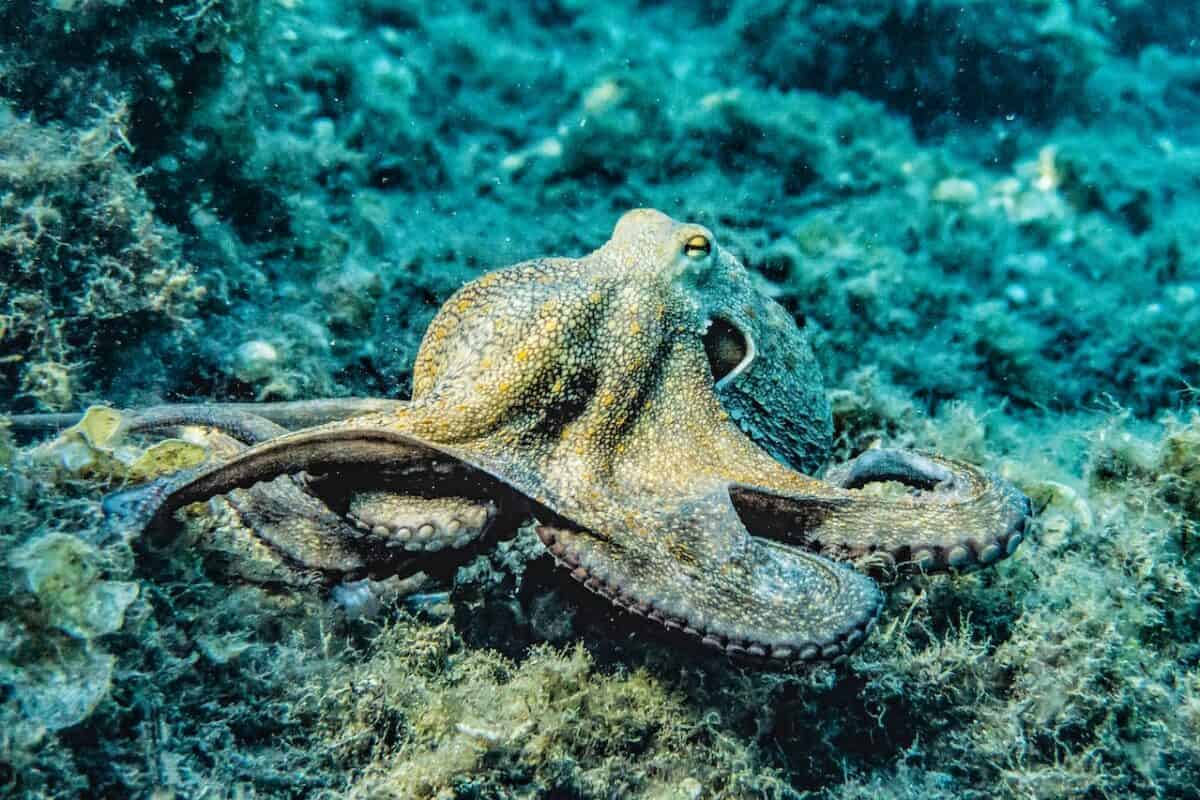
The ocean is a vast, mysterious world, teeming with creatures that seem almost alien-like in their complexity and adaptability. Among these, the octopus stands out with its remarkable ability to transform its appearance.
This was exemplified in the amazing deep-sea footage of an octopus transforming into a huge balloon. This display is a testament to the octopus’s incredible ability to disguise and transform itself. This skill is crucial for its survival in the harsh and competitive marine environment.
This footage serves as a reminder of how much remains unknown about the deep depths of the oceans. Despite our advancements in technology, the ocean continues to hold secrets and surprises waiting to be discovered!
Thank you for reading this article about an octopus that transforms into a balloon! Dive even deeper into our endless oceans:
- The Dolphin Is the Most Social Marine Animal
- A Seal Appearaing In a Subruban Neighbourhood
- The Mantis Shrimp’s Powerful Punch In Action
Join our Forum for free today!


